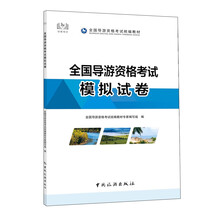As the first President of the United States, George Washington contributed much to getting the new government under way. He steered his country on a sure and steady course. John Adams said that Washington was not influenced by any one man. He listened from all sides and was more independent in his thinking than any man Adams knew. But all was not easy, peaceful and free from trouble, even within Washington's own Cabinet.
Thomas Jefferson and Alexander Hamilton .did not get along. The tall, red-headed Virginian had little use for the ideas of the smaller, dark-skinned lawyer from New York. The two disagreed on the idea of democracy. Hamilton was against it, Jefferson in favor. They disagreed, too, on which group the national government should support most -farmers, or those who owned factories and businesses.
To Thomas Jefferson, the best America was an America of independent farmers, with little if any cities. Farmers were honest and close to nnature and soil. They were hard-working and could take care of themselves. They needed little help from any government. Cities, to Jefferson, were evil, wicked places. Within their factories, they produced large class of poor people and a miserable way of life. The poor in the cities, said Jefferson, would always need help from the government. "I think our govemment will remain good for many countries" he wrote, "as long as they remain chiefly agricultural. And this will be so as long as there shall be empty lands in any parts of America. When people get crowded together in large cities, as in Europe, our governments will become as corrupt as in Europe. "
To Hamilton, on the other hand, farmers served but two purposes. One was to produce food for people who lived in cities. The other was to produce raw materials such as flax and tobacco for factories. Hamilton's ideal America was one of cities, factories, and trade. He wanted a much stronger national govemment than Jefferson did. And Hamilton wanted that govemment to do all it could to help cities, factories, and trade to grow.
Hamilton and Jefferson disagreed over whether there should be a Bank of the United States. Jefferson was afraid that the Bank would help only merchants and factory owners. That is exactly what Hamilton would hoped that the bank would do. The two men disagreed on whether the United States should help a new government in France, one that had come about as a result of revolution. Jefferson wanted to help France because France had helped the United States in their revolution. Hamilton did not. The whisky tax had been Hamilton's idea. He had persuaded the leaders of Congress to pass the law. Any tax that hit farmers was not to Jefferson's liking. Hamilton rode with Washington against the whisky rebels. Jefferson bitterly opposed the government's action.
Jefferson and Hamilton were strong leaders and each had many followers. As their disagreements grew, so did that between the groups that followed them: This was the beginning of political parties in the United States.
Practice Tests
Sample Test One
Part I
Listen, to the following short passages and then decide whether the corresponding statements are true or false. There are 10 statements in this part of the test, 2 points for each statement.
1. On a global scale, violence kills 1.6 million people a year. It leaves millions more with injuries, disabilities and mental disorders. 'Its causes are complex and its consequences are devastating.
2. In order to provide the latest information about violence, WHO launched the World Report on Violence and Health in 2002. This is the first report to provide a comprehensive view of the magnitude of violence around the world, the factors that lead to violence and, at the same time, the potential that exists to tackle this global public health problem. It provides data from around the world on suicide, child abuse, youth violence, sexual violence, abuse of the elderly, violence between intimate partners and other areas of personal and social conflict.
3. The World Report on Violence and Health has three main goals. The first is to raise awareness of violence as a global public health problem. It is not simply an issue for the police and justice departments, for the military or for international security councils.
4. To find out which types of foods require the most fossil fuels and, as a result, release the most CO2,they considered five different diets. Each equaled 3,774 calories a day, and ranged from the average American diet to red meat, fish, poultry, and vegetarian diets. It came as no surprise to the researchers that the vegetarian diet ranked number one as the most energy efficient, followed by poultry and the average American diet. It did come as a surprise, however, that fish almost was on par with red meat as the least efficient -a large amount of fossil fuel is necessary for long-distance voyages to catch large predatory fishes such as tuna and swordfish. Moreover, salmon farming is not energy efficient.
5. Deaths are only a very small part of the problem of violence. For each death caused by violence, there are many other people who suffer the social, psychological and physical consequences of violence. Nevertheless: when deaths caused by violence are compared with deaths caused by other global public health problems, the importance of violence becomes alarmingly clear.
6. In 2000, there were over 1.6 million deaths due to violence. This is about half the number of deaths due to HIV/AIDS in that year, and about equal to the number of deaths due to tuberculosis. In 2000, violence took more lives than road traffic crashes and malaria.
7. At the broadest level, violence is divided into three major categories: self-directed, interpersonal and collective. So we differentiate between violence a person infects upon himself or herself; violence inflicted by another individual or small group of individuals; and violence inflicted by larger groups or states.
8. When we speak of violence it is important to understand these different categories. However, it is also crucial to understand that they are closely interrelated. Many risk factors are common to all forms of violence. These include alcohol, drugs, firearms and economic and social inequalities. Reducing these risk factors will reduce all types of violence.
9. Facts and figures clearly demonstrate the enormous impact of violence on public health and health systems. But, behind these figures are individuals and human tragedies. Violence of all types has a dramatic effect on the lives of the victims, the perpetrators and their families, often for a lifetime and sometimes for several generations.
10. To begin to tackle the problem of violence, we need to know its magnitude. Contrary to the impression given by the media, the largest number of violent deaths in 2000 was due not to war but to suicide: 815000 cases-or one suicide every forty seconds. Interpersonal violence accounted for 520000 deaths or one murder per minute. There were 310000 deaths directly due to collective violence.
……
展开










